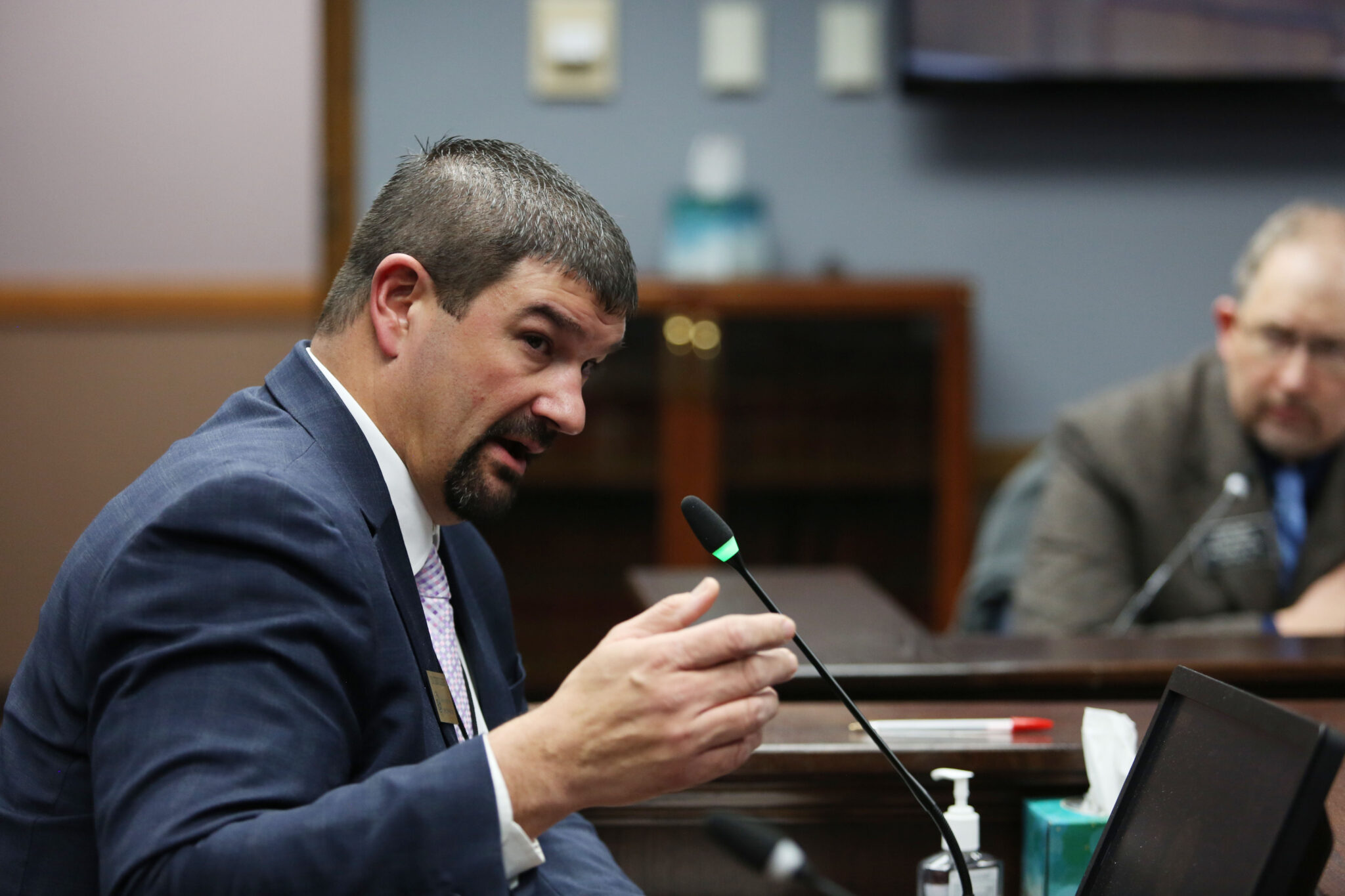
Joshua Haiar, South Dakota Searchlight
Governor Kristi Noem’s administration recently turned down more than $70 million of federal funds from energy efficiency and environmental programs, according to her top budget official.
The Home Energy Rebates program would have provided the state with $69 million to give South Dakotans rebates for energy-efficient home retrofits and high-efficiency electric appliances. The deadline for indicating intent to participate was last week. Earlier this year, the state passed up $1.8 million to help administer and set up the program.
Kelly Moore is a consumer advocate from Piedmont who planned to use the rebate to offset the bill for a new heat pump.
“South Dakotans will see no direct return on their federal taxes,” Moore said. “Other states will benefit from our contributions.”
During a July 30 legislative budget committee meeting, Noem’s Bureau of Finance and Management Commissioner Jim Terwilliger explained the decisions, citing administrative burdens, limited staff capacity and policy disagreements as factors for turning down the funding.
“These are federal taxpayer dollars. We know the situation of the federal budget right now. I don’t think I need to go down that path,” Terwilliger said. “And so, with good faith, we did look into this. We just don’t believe that it’s the right thing for South Dakota.”
The funding comes from the 2022 federal Inflation Reduction Act, which the Biden administration described as the most significant action ever taken by Congress to address climate change. The legislation includes provisions to raise revenue through increased taxes on corporations and high-income individuals.
Some lawmakers on the legislative budget committee disagreed with the decision to pass up the money.
“We’re missing out on some funds that could help our people,” said Sen. Larry Zikmund, R-Sioux Falls.
Other programs declined
Terwilliger said the administration also turned down money from the federal Fenceline Monitoring program. He said it would have provided $406,000 to monitor air quality around industrial areas.
And the state passed up its potential share of $1 billion allocated for states to adopt the latest optional building energy codes.
Over the course of 30 years, according to the U.S. Department of Energy, that program could have reduced South Dakota’s carbon dioxide emissions by about 42 million metric tons and resulted in estimated consumer cost savings of $9,027 per South Dakota home.
The federal government would have provided funding to cover administrative costs. There was no requirement for the state to contribute.
“This is something that we did not apply for,” Terwilliger said. “I think the application period may have come and gone for that already.”
Additionally, Terwilliger mentioned how the administration passed up on the Climate Pollution Reduction grants program. The program allocated a total of $5 billion for states to reduce greenhouse gas emissions. Sioux Falls also passed up the funding. Rapid City applied and received a $1 million planning grant but was not awarded an implementation grant.
Policy differences
Terwilliger said the one-time dollars associated with the programs would create long-term funding commitments for the state after the federal dollars run out. The state’s Energy Management Office currently has one full-time employee.
“Secondly, what’s the underlying policy that is kind of being encouraged, or pushed through with some of these programs?” Terwilliger said. “And I think, generally, we just kind of disagree with some of those policies as well.”
Some Republican state lawmakers on the budget committee support the state’s decision.
“It’s not manna from heaven,” said Rep. Chris Karr, R-Sioux Falls. “These are taxpayer dollars that somebody paid in.”

Some lawmakers expressed concerns that declining the federal dollars would negatively impact South Dakota residents, particularly those struggling with rising energy costs and the impacts of recent severe weather events. They said if staffing is the issue, the state should use some of the funds for contractors to help run the programs. Terwilliger told lawmakers about 20% of the funds could be used to run the programs.
One of the lawmakers making those criticisms was Rep. Linda Duba, D-Sioux Falls.
“I think it’s extremely unfortunate that we made the decision for the people of South Dakota not to apply for this opportunity,” Duba said, referring to the $69 million in energy efficiency rebates.
Not all Inflation Reduction Act funding opportunities were dismissed. Terwilliger said the state has participated in the Forest Legacy Program, securing $1.5 million in funding to purchase a 250-acre parcel in collaboration with the Game, Fish and Parks Department. The land preserves some forested areas along the Big Sioux River near Newton Hills State Park.
Plus, Sioux Falls successfully applied for $3 million in funding under the Urban and Community Forestry Program, with another $600,000 allocated to other communities across the state, according to Terwilliger. The $3 million will help mitigate damage caused by emerald ash borer in an area spanning 25 square miles.
Noem has often said ‘no’
There are several prior examples of the Noem administration declining federal funding.
Duba was a vocal critic of the administration passing up $7.5 million to feed low-income kids while school is out for the summer.
Noem is one of six governors who did not apply for a federal grant program to support solar energy projects around the nation. She also passed on a share of $1 billion in nationwide cybersecurity grants for county and city governments.
In 2020, the administration rejected extra unemployment benefits, provided by then-President Trump during the pandemic. The measure provided an additional $300 in unemployment benefits per week, but required states to kick in another $100.
